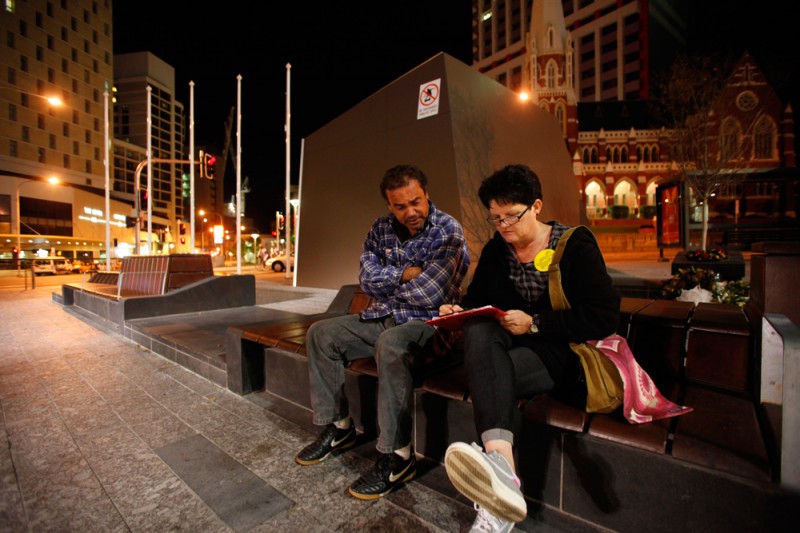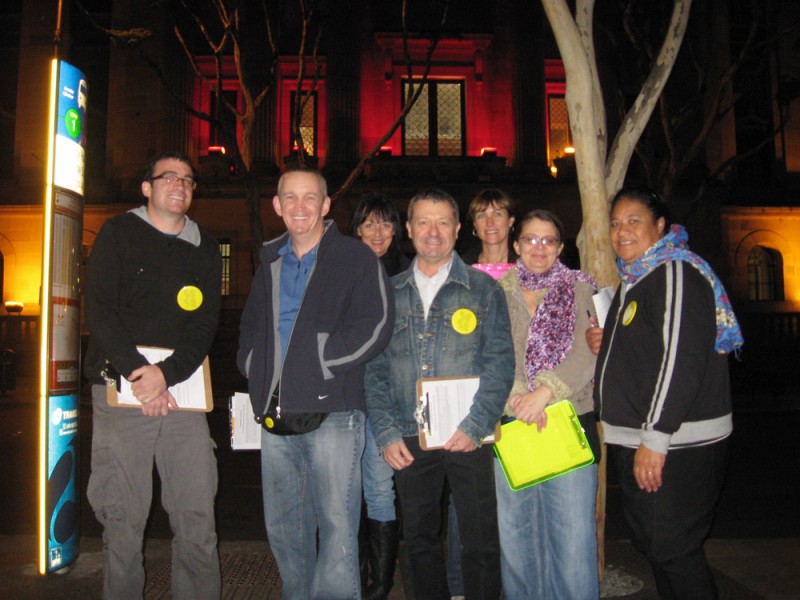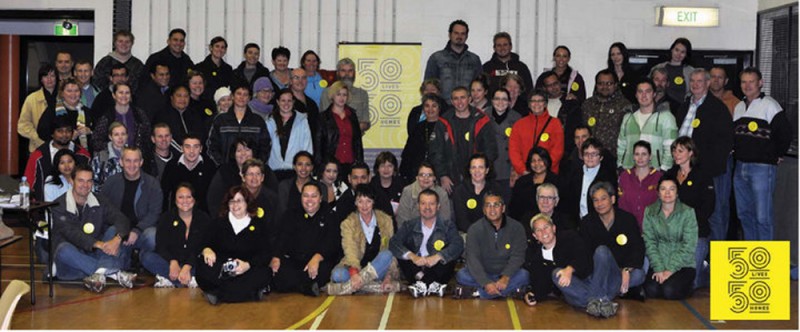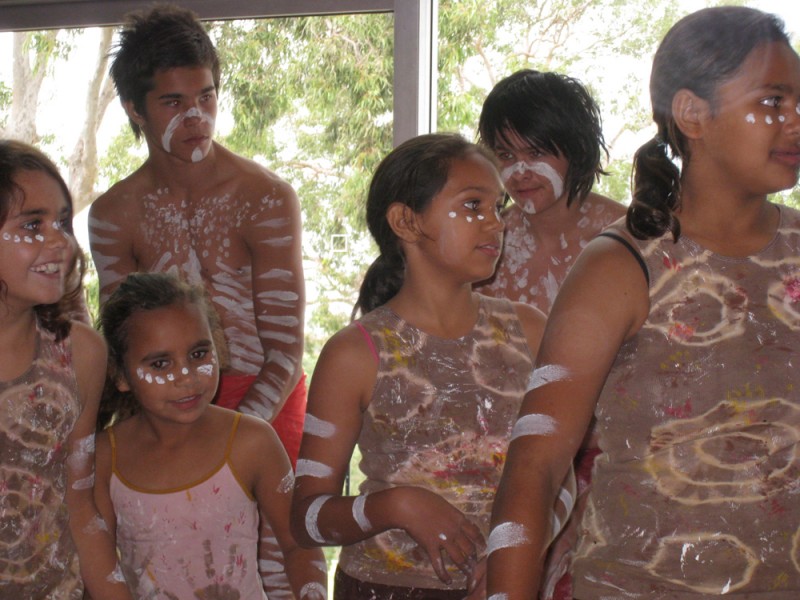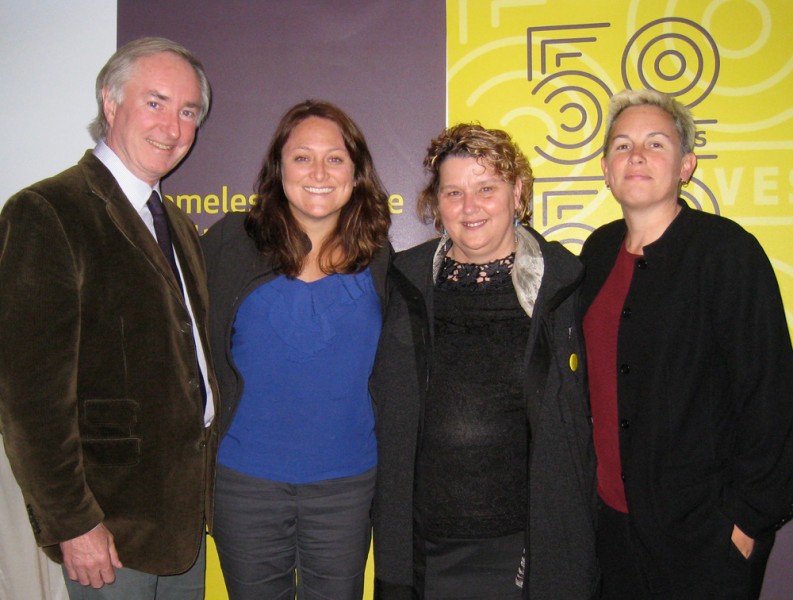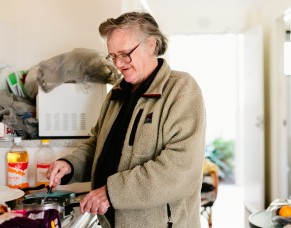Background to the Campaign
50 Lives 50 Homes Campaign
The 50 Lives 50 Homes campaign to house and support Brisbane’s vulnerable people experiencing homelessness was launched in June 2010. Micah Projects and the campaign partners were committed to meeting the targets set by government to reduce overall homelessness by half and offer housing to all people who sleep rough by 2020. Our colleagues at Common Ground in the USA had developed a targeted outreach strategy for the first stage of this work: creating a register of all people who are sleeping rough and prioritising those whose health is most at risk by remaining homeless. Starting with the people who are most entrenched in homelessness made sense and we decided to set achievable targets of housing fifty people at a time, or ‘bite size chunks’, as Becky Kanis from Common Ground Los Angeles would say.
Completing the vulnerability index in King George Square.
Common Ground developed a tool called the Vulnerability Index, based on research by Dr Jim O’Connell from the Boston Health Care for the Homeless program into the key mortality risk indicators that are prevalent in people who are long term homeless. As well as collecting the name and age of homeless individuals and their health status, the Index captures data on their institutional history (prison, hospital, military, etc.), length of homelessness, crisis accommodation use and previous housing situation. During the week of 7 June, 2010 Micah Projects support and advocacy workers were joined by outreach workers from other agencies and scores of community volunteers to administer the surveys. Teams went out at 4am in a methodical canvassing of places where people sleep rough in order to meet people before they left the space for the day. Respondents who consented were photographed where they slept for future identification which aids in guaranteeing consistency among teams of outreach workers. Once the data was collected, it was entered into a database and people were then ranked according to their age and prevalence of health indicators. This informs the decision making process when matching available resources in housing and support services to an individual’s need.
The results of the survey were astounding and demonstrated the high degree of disability and the incredible length of time spent homeless by the people we met: one man had been homeless for 40 years. Half of the people surveyed were found to be ‘vulnerable’, meaning they had been homeless for over 6 months and had at least one of eight major health risk indicators, such as end stage renal disease and multiple recent hospitalisations. These results provided the information necessary for planning the housing and support needs of each individual.
Volunteers on the streets before dawn.
Our wonderful volunteers on the last survey morning.
The Registry Week culminated in the Homeless to Home Healthcare Forum where healthcare professionals from all over Australia shared their work with vulnerable homeless people. The Forum launched a Network of healthcare professionals and organisations with the intention of advancing strategies aimed at meeting the healthcare needs of vulnerable homeless and formerly homeless adults across Brisbane. We were joined at the Forum (and throughout the week) by Dr Jim O’Connell, Becky Kanis and Beth Sandor from Common Ground, Los Angeles, USA. Their time, energy and expertise were invaluable to this process and they continue to stay in touch with the campaign.
Holy Rosary School Indigenous dancers at the Homeless to Home Healthcare Forum.
Dr Jim O’Connell from Boston Health Care for the Homeless, Beth Sandor and Becky Kanis from Common Ground USA with Karyn Walsh from Micah Projects.
50 Lives 50 Homes would not have been possible without a partnership with Mater Health Services and the generosity of the Mater Foundation as well as almost 100 volunteers and the parents, students and teachers of All Hallows’ School (who provided a home base and breakfast for volunteers).
As at 31 December 2013 a total of 701 people had been surveyed with the Vulnerability Index about their housing, healthcare and support service needs. 230 people have been housed by the 50 Lives 50 Homes campaign partners.
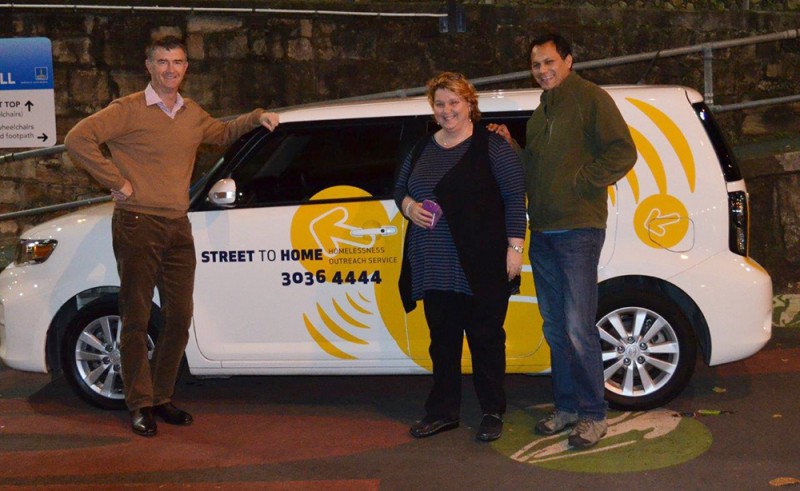 Minister for Housing Tim Mander heading out with Micah Projects' Street to Home team,
Minister for Housing Tim Mander heading out with Micah Projects' Street to Home team,
6 August 2013.
50 Lives 50 Homes campaign partners included:
- Micah Projects
- 4Walls Housing
- 50 Lives 50 Homes Community & Stakeholders Committee
- 50 Lives 50 Homes Volunteers
- 99 Consulting
- 139 Club
- All Hallows’ School
- Brisbane City Council
- Brisbane Youth Service
- Centacare
- Common Ground USA (now known as Community Solutions)
- Department of Communities, Housing and Homelessness Services
- Edmund Rice Network
- Footprints
- Goori Referral Centre
- Grocon Constructors
- Homeless Health Outreach Team
- Homeless to Home Healthcare Network
- Marcia’s on Montague
- Mater Foundation
- Mater Health Services
- Minter Ellison
- Mission Australia
- Murri Watch
- OzCare
- Pindari Women’s Accommodation, Salvation Army
- Queensland Health
- Queensland Police Service
- Queensland Public Interest Law Clearing House
- Retravision West End
- Rough Sleepers Service Coordination Group
- SANDBAG
- Spiritus
- St Vincent de Paul Housing Services
- Tender Disposals
- Yeronga State High School.
